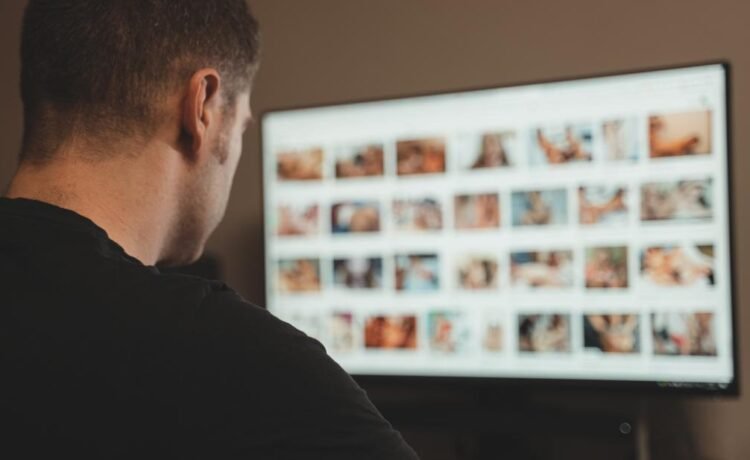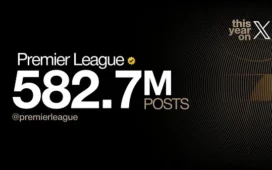
As many as one in three young Australians are relying on “violent and degrading” pornography to teach them about sex, a new report has revealed.
An online survey of 832 Australians aged 16 to 20, commissioned by Our Watch, asked them about gender roles, sex, dating and relationships, including their attitudes towards pornography.
The research found young people viewed pornography for the first time, on average, at 13.6-years-old – often before they’d been given the tools to understand what they were seeing.
Of greater concern is that 31 percent of participants are watching such content as a form of sex education – even though many know it’s not a good way to learn about sex.
While pornography is not inherently problematic, a lot of it “is violent and degrading toward women,” Watch CEO Patty Kinnersly told news.com.au.
“A lot of young people are saying that they’re learning about sex and sexual relationships and relationships by using pornography, and then they’re holding those values and those views as they go into intimate relationships.”
As Teach Us Consent founder Chanel Contos put it in her National Press Club address last November, learning how to have sex by watching pornography is the equivalent of learning to drive by watching Formula 1.
The comparison is one Kinnersly “absolutely” agrees with.
“It’s the normalization of aggression and misogyny and things like strangulation that has developed in recent decades that is particularly concerning,” she added, noting that one in three Aussies aged 18 and 19 have reported experiencing intimate partner violence in the past year.
“If you think about people as young as 13 starting to see violent pornography that really perpetuates violence against women in particular, and that there is a high percentage of young men watching this pornography regularly and normalizing it, it’s not necessarily surprising that it’s coming out in intimate partner relationships in their early years.”
A survey conducted earlier this year by the University of Melbourne Law School and the University of Queensland of 4702 people aged between 18 and 35 revealed that 57 percent of participants had been strangled during sex at least once. More than half (51 percent) reported having done it to a partner.
Kinnersly described these statistics – which have largely been put down to the depiction of sexual strangulation in mainstream pornography and other contemporary media – as “mind-blowing”.
In pornography, choking is often shown as an act of pleasure rather than one that can cause harm. Yet “there is no safe way to practice strangulation or to give consent during strangulation,” Kinnersly pointed out.
And the more common it becomes, the more pressure young people will feel to engage in it.
“If young women are seeing as normalized that they are submissive, and that choking – and overwhelmingly, women are the receivers of the choking – if they’re seeing that as normalized and that’s the way they have to behave in a normal relationship, then clearly it’s going to have a big impact on young women and their esteem and what they’re expecting in healthy relationships,” Kinnersly said.
The increasing prevalence of choking during sex, including by young men “who don’t have a violent bone in their body,” is something Contos further explores in her book, Consent Laid Bare.
“The fact that we just call this ‘sex’ and not ‘rough sex’ means that as a society we have now made violent sex the default,” she writes.
“To not leave with bruises, by slapped, choked, spat on, ejaculated on, f–ked so hard that it hurts to walk is an anomaly worthy of an adjective – ‘vanilla sex’.
“If these acts occurred in any other context, they would be classified as intimate partner violence, but if you slide a mattress under the altercation and add intercourse, it’s apparently good sex.”
Almost three-quarters (72 percent) of the young people surveyed by Our Watch said the pornography they viewed often showed aggression and violence against women. Eight-four percent believe that porn pushes stereotypes of what is expected of men and women during sex.
The knock-on effects of this cannot be overestimated, Kinnersly said.
“In a country where violence against women and gender-based violence is a national emergency, it doesn’t matter whether you’re talking about sexual harassment and sexual assault in workplaces and universities, or street harassment or intimate partner violence,” Kinnersly said.
“It is driven, it is underpinned by disrespect, gender stereotypes about women being submissive and men being dominant, about sexism in all aspects of our community.”
This is why “it’s so important that we as a community are including consent and being able to critique pornography as a normal part of consent and relationships education,” Kinnersly said.
“So then, by the time they’re having access to pornography, they do have themselves something to challenge and say, ‘Actually, that’s not the way my world is, that’s not what I see’,” she added.
Adults also have to meet young people “where they are,” Kinnersly said, via the likes of Our Watch’s The Line campaign, a primary prevention resource that runs on TikTok, Instagram, Snapchat and Facebook and supports young people to have healthy and respectful relationships.
“I think that because so many of us haven’t grown up with the online environment being a normal part of our day-to-day experience …(we forget) that it is just absolutely a part of people’s worlds,” Kinnersly said.
“We have to understand that that’s the truth for young people. It is not something added on, we can’t take it away or turn it off. We have to meet them where they are.
“We’ve got to pull this thing out of the dark – because most people I talk to still think pornography is something they saw when they were 18, back in the day on the VCR.
“It’s not that anymore. It’s a very different thing.”








Recent Comments